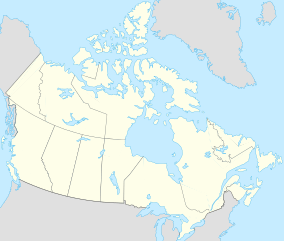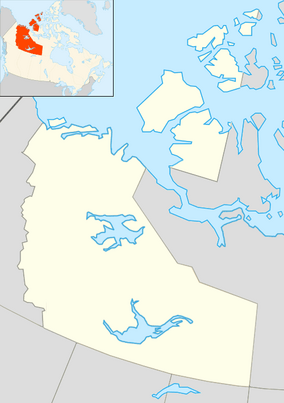Tuktut Nogait National Park facts for kids
Quick facts for kids Tuktut Nogait National Park |
|
|---|---|
|
IUCN Category II (National Park)
|
|
| Location | Northwest Territories, Canada |
| Nearest city | Paulatuk |
| Area | 18,100 km2 (7,000 sq mi) |
| Established | 1998 |
| Governing body | Parks Canada |
Tuktut Nogait National Park is a special place in the Northwest Territories of Canada. It became a national park in 1998. The name "Tuktut Nogait" means "young caribou" in the Inuvialuktun language. This park is very important because it's where the Bluenose-West caribou herd has its babies.
This amazing park is also home to many other wild animals. You can find muskoxen, grizzly bears, Arctic char fish, red foxes, wolverines, and Arctic wolves here. Smaller animals like Arctic ground squirrels and collared lemmings also live in the park.
Tuktut Nogait is a big nesting spot for many migratory birds. These birds fly long distances to lay their eggs here. Strong birds of prey, like peregrine falcons, rough-legged hawks, gyr falcons, and golden eagles, build their nests on the tall cliffs of the river canyons.
Sometimes, the Dolphin-Union caribou herd visits the park. This herd usually lives on Victoria Island. They travel along the coast to find places where the wind has cleared the snow. This makes it easier for them to find food.
Contents
Discover Tuktut Nogait National Park
The park is huge, covering over 18,000 square kilometers. That's a lot of land! It is located about 170 kilometers north of the Arctic Circle. This means it's very far north in Canada's mainland.
The main rivers flowing through the park are the Hornaday River, Brock River, and Roscoe River. These rivers are important for the animals and plants that live there.
A Look at History
People have lived in the Tuktut Nogait area for a very long time. Scientists have found over 400 old sites in the park. These sites show where people camped, stored food, and even buried their loved ones. The oldest sites are from the Thule people or Copper Inuit, dating back to the years 1200 to 1500.
The first European to visit this area was Father Émile Petitot in 1867-68. Later, in 1930, the Hudson's Bay Company tried to set up a trading post at Letty Harbour. But it closed in 1937 because there wasn't enough trade.
A Roman Catholic Mission was built in Paulatuk in 1935. It also had a small trading post until 1954. The Inuit people who came to Paulatuk were mostly from the Mackenzie and Alaska regions. In 1955, many people moved to Cape Parry. A special radar station, called a Distant Early Warning (DEW) line site, was being built there. This offered jobs for building and working.
Protecting the Land and Wildlife
The Inuvialuit people have special rights in the park. These rights are part of the Inuvialuit Final Agreement. They can hunt, fish, and trap for their families within certain parts of the park. They mostly fish for Arctic char, hunt caribou, and do some trapping. It's important to know that hunting for sport or for selling is not allowed in the park.
Parks Canada is working on several projects in Tuktut Nogait. They are building a base camp at Uyarsivik Lake. This camp will help them study the environment and cultural sites. It will also offer chances for visitors and help with youth programs. They are also creating new guides and materials for visitors.
Caribou Herds
There are four main caribou herds in the Northwest Territories. These are the Cape Bathurst, Bluenose West, Bluenose East, and Bathurst herds. The Bluenose East caribou herd has been growing. In 2010, its population was about 122,000. Many people believe that the creation of Tuktut Nogait National Park helped this herd recover.
Unfortunately, the other three herds have seen big drops in their numbers. They have gone down by 84-93% since the 1980s and 1990s. This shows how important protected areas like Tuktut Nogait National Park are for wildlife.
Images for kids
See also
 In Spanish: Parque nacional Tuktut Nogait para niños
In Spanish: Parque nacional Tuktut Nogait para niños
- National parks of Canada
- List of National Parks of Canada
- List of Northwest Territories parks





